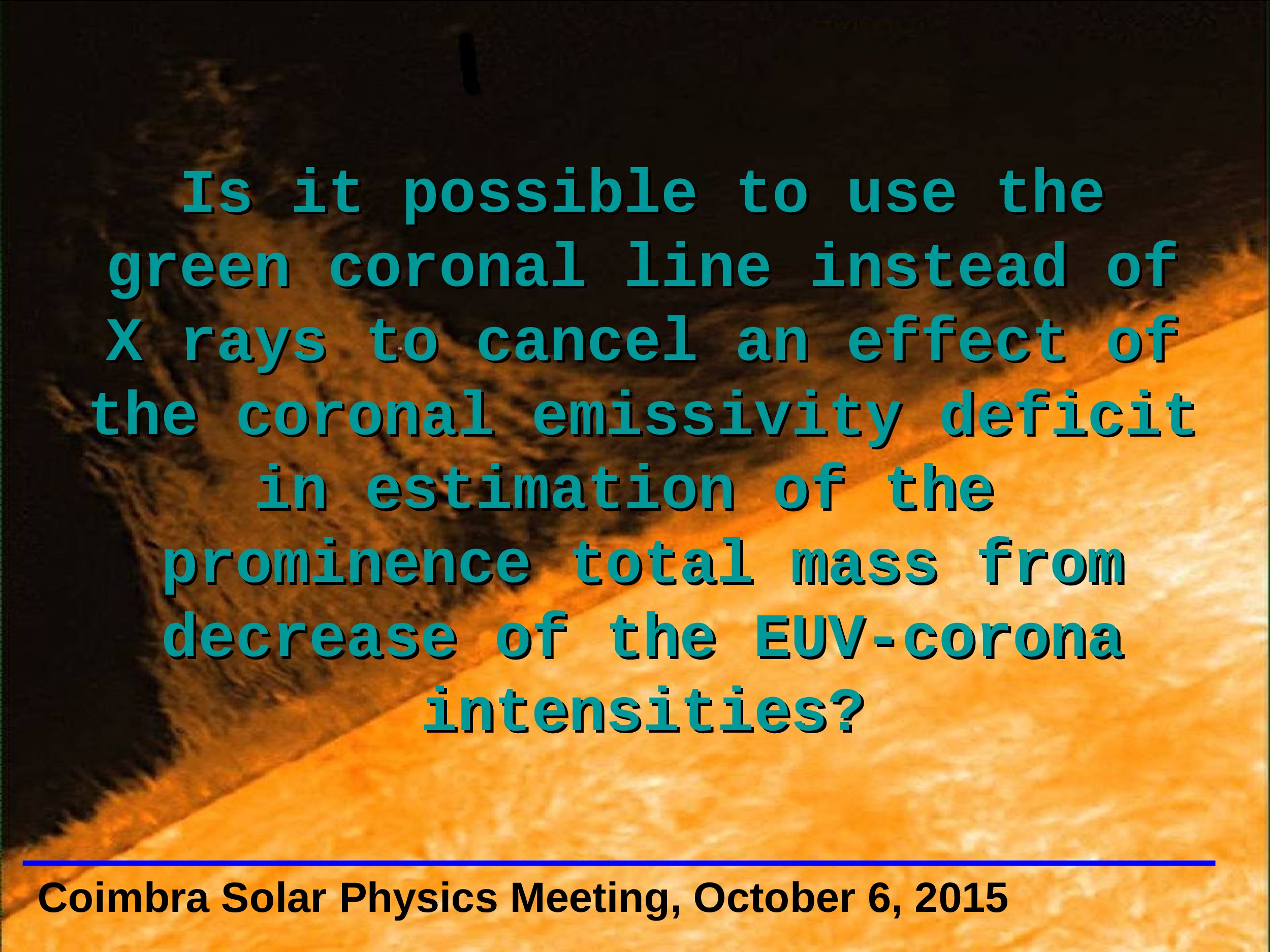Abstract
Total masses of six quiescent prominences observed from April through June 2011 were estimated using
multi-spectral observations (in EUV, X-rays, H alpha,and Ca ii H) and method based on work of Heinzel et al. (2008). The method uses the fact that intensity of the EUV solar corona at wavelengths below 912 Å is reduced at a prominence by the absorption in resonance continua (photoionisation) of hydrogen and possibly by helium and subsequently an amount of absorbed radiation is proportional to the column density of hydrogen and helium plasma. Moreover, the deficit of the coronal emissivity in volume occupied by the cool prominence plasma also contributes to the intensity decrease. The observations in X-rays which are not absorbed by the prominence plasma, allow us to separate these two mechanisms from each other. The X-ray observations of XRT onboard the Hinode satellite made with the Al-mesh focal filter were used because the X-ray coronal radiation formed in plasma of temperatures of the order
of 10^6 K was registered and EUV spectral lines occurring in the 193, 211 and 335 A channels of the Atmospheric Imaging Assembly of the Solar Dynamics Observatory satellite are also formed at such temperatures. Unfortunately, the Al-mesh filter has a secondary peak of the transmittance at around 171 A what causes a contribution from the EUV corona to the measured data of up to 10 % in the quiet corona. Thus, absorption in prominence plasma influences XRT X-ray data when using the Al-mesh filter. On the other hand, other X-ray XRT filters are more sensitive to plasma of much higher temperatures (log T of the order of 7), thus observations using these filters cannot be used together with the AIA observations in the method for mass estimations. This problem could be solved using observations in
the green coronal line instead of X-rays. Absorption of the green coronal line by a prominence plasma is negligible and this line is formed at temperatures of the order of 10^6 K. We compare values of the total mass of the prominence observed on 20 October 2012 on SE limb estimated when using XRT X-ray observations and observations in the green coronal line obtained at Kislovodsk Mountain Astronomical Station of the Pulkovo observatory (Russia).
If the presentation contains inappropriate content, please
report the presentation. You will be redirected to the landing page.
